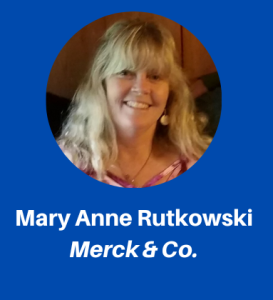RWD/RWE Programming & Reporting Standards: Utilising OMOP Standards |
|---|
Real-world data is a rich source of information that we are now starting to use for regulatory submissions. However, as the collection and validation of this data is less standard and restricted than clinical trial data, it poses a lot of challenges that we, as an industry, are not used to. Working with missing data, different analysis techniques, different dictionaries and data models poses challenges for our clinical and statistical programmers. During this Community forum we will dive into this and give examples of mapping and data handling in two ways (OMOP to SDTM and source/SDTM to OMOP). We will explore the challenges of mapping to and from OMOP, which is a more open standard than SDTM and uses a stricter model with strict implementation guides. This Community Forum event will take place over Zoom on 12 April 2023, 14:00–15:00(BST)/09:00–10:00 (EST). Register here! |
| Presenter | Bio |
|---|---|
Berber Snoeijer, ClinLine Berber Snoeijer started in clinical research in 1997 as a biometrician and has since then worked with clinical data in different functions. In 2001 she started a CRO – Biometric Support – aimed at the data management, data analysis and reporting of clinical trials. In 2011 she started as an R&D manager dedicated to investigating and utilising the potential of real-world data from electronic health records. This resulted in many different solutions including a full reporting system to give feedback information to clinical research professionals. Berber is experienced with software and database engineering, process engineering and improving efficient utilisation and interaction of people based on management drivers. Nowadays, she uses these skills and knowledge to help life science companies assess, design and improve business solutions and processes at smaller and larger scales. | |
Mary Anne Rutkowski, Merk & Co Mary Anne Rutkowski is currently a Principal Scientist at Merck & Co in a Statistical Programming department, where her team provides high-quality programming analysis and reporting deliverables using real-world-data for non-interventional studies. She has been at Merck for over 30 years and during her first 25 years she had many roles, most of which were in programming groups that used clinical trial data for regulatory submissions or claims data for marketing analysis. Mary Anne recently joined the PHUSE Real-World Evidence Working Group. She has a bachelor’s degree in engineering, a master’s degree in computer science and a master’s degree in business administration. | |
Jerry Wang, Johnson & Johnson Jerry Wang is a data engineer in the Data Engineering & Analytics team of the Clinical & Statistical Programming Department at Janssen R&D. He is a technologically savvy statistical programmer, who is focusing on now identifying opportunities, driving optimisation and innovation, and applying traditional and cutting-edge approaches to clinical-related data analytics. Prior to this role, Jerry spent 10 years working with clinical data. | |
Mike Briganti, Johnson & Johnson Mike Briganti is a data engineer at Janssen R&D. Mike received his PhD in Public Health and MPH from Rutgers University, and his BA in Physics from the University of Maine. | |
Kimberly Greene, Thermo Fisher Scientific Kimberly Greene works at PPD and has been with their real-world evidence group for over a year. She has worked as a clinical statistical programmer for 12 years and as an SAS programmer for over 20 years. She has a BS in Applied Mathematics and Statistics from Stony Brook University. |


